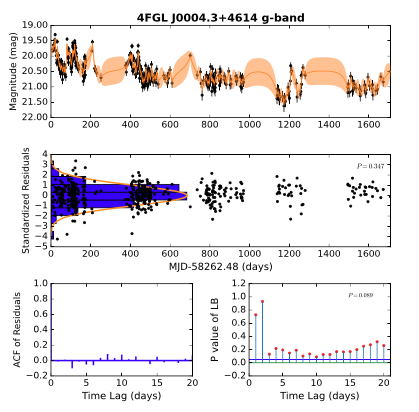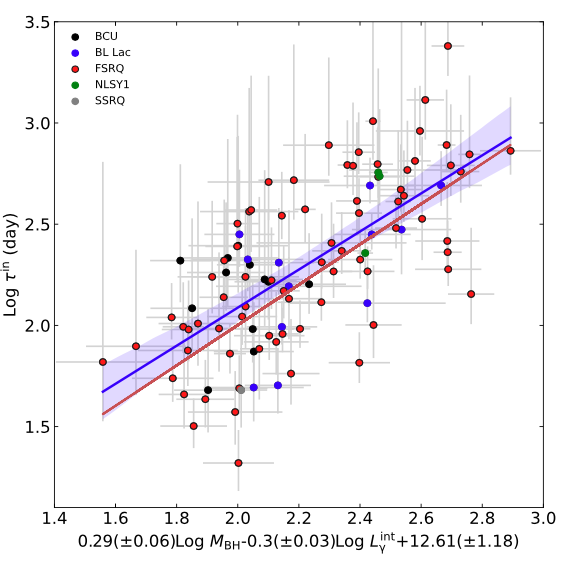XIONG Dingrong, an Associate Researcher at the Lijiang Astronomical Observatory of the Yunnan Observatories, Chinese Academy of Sciences, along with his collaborative team, has made important progress in understanding the variability mechanisms of jetted active galactic nuclei (AGNs). Their findings, based on in-depth analysis of extensive optical survey data, have been published in The Astrophysical Journal Supplement Series.
Jetted AGNs are among the most energetic objects in the universe, releasing tremendous amounts of energy continuously. Their powerful relativistic jets and pronounced variability have drawn widespread attention. Deciphering the origins of this variability not only illuminates the physical processes occurring within these objects but also deepens understanding of the central "black hole engine" driving such phenomena and its surrounding environment. Despite ongoing efforts, a unified explanation for the variability mechanisms of jetted AGNs remains elusive, and a comprehensive, definitive model has not yet to be developed.

Figure 1: fitting of optical light curves using the damped random walk model within Gaussian process, with an evaluation of the fitting performance. Image by XIONG.
The research team utilized long-term, high-quality optical observational data from the Zwicky Transient Facility (ZTF). They integrated this data with the Damping Random Walk (DRW) model within a Gaussian Process (GP) framework, enabling more precise fitting of the light curves of jetted AGNs. Unlike previous studies, the team analyzed the largest available sample of gamma-ray-emitting jetted AGNs and innovatively incorporated jet power—measured via gamma-ray luminosity—as a new parameter, using a nonparametric Gaussian regression method).
Their results indicate that a single DRW model cannot fully explain the diverse variability behaviors observed among these AGNs. More importantly, the study uncovered new correlations between the intrinsic variability timescale, black hole mass, and jet power, with the relationship showing significant differences between accreting efficient and inefficient jetted AGNs.

Figure 2: intrinsic variability damping timescale versus black hole mass and gamma-ray luminosity for accreting efficient jetted AGNs. Image by XIONG.
Building on these findings, the researchers proposed a clearer, more comprehensive model of AGN variability:I the optical variability in high-accretion systems likely originates from ultraviolet emission regions within the standard accretion disk, similar to non-jetted AGNs, and is directly related to shock wave acceleration within the jet. When the jet is oriented toward the observer, variability is amplified by the Doppler beaming effect. Conversely, in low-accretion jetted AGNs, the variability timescale corresponds closely to the electron escape timescale.
This study not only advances the understanding of the variability mechanisms in jetted AGNs but also provides valuable support for constructing more accurate variability models and refining observational strategies in future research. Ultimately, it promotes the exploration of some of the most extreme astrophysical phenomena in the universe.
This research was supported by the National Natural Science Foundation of China, the Western Light of CAS Program, the Youth Top Talent Program of Yunnan Province, and the China Space Station Telescope (CSST) Scientific Research Program.
Contact:
XIONG Dingrong
Yunnan Observatories, CAS
E-mail:xiongdingrong@ynao.ac.cn